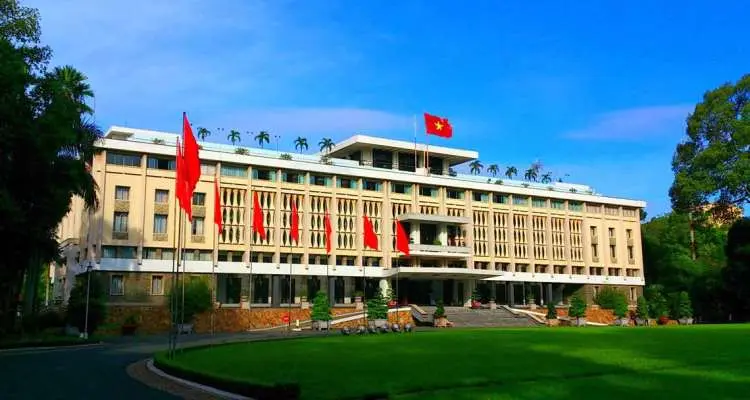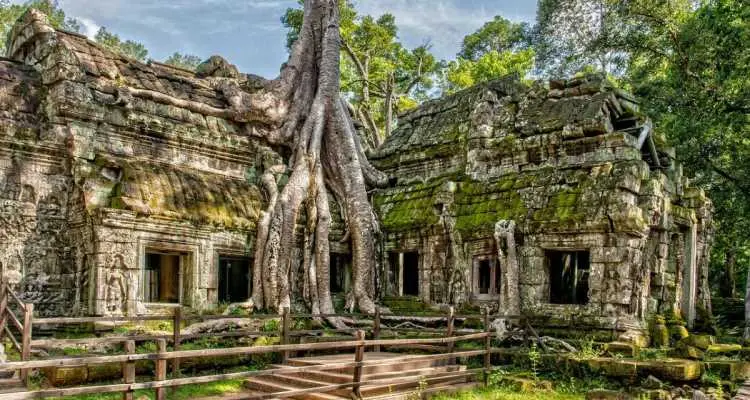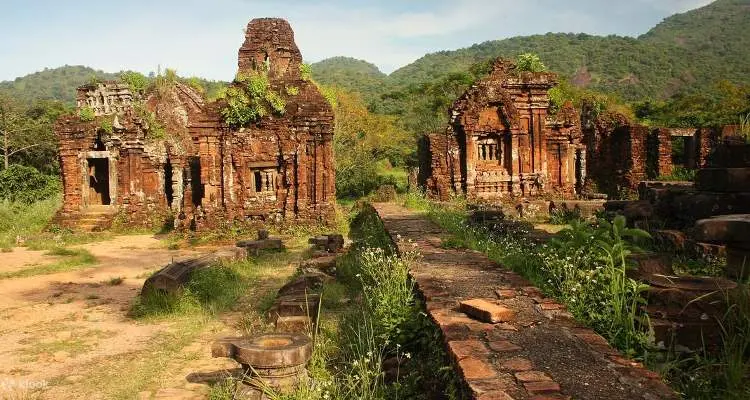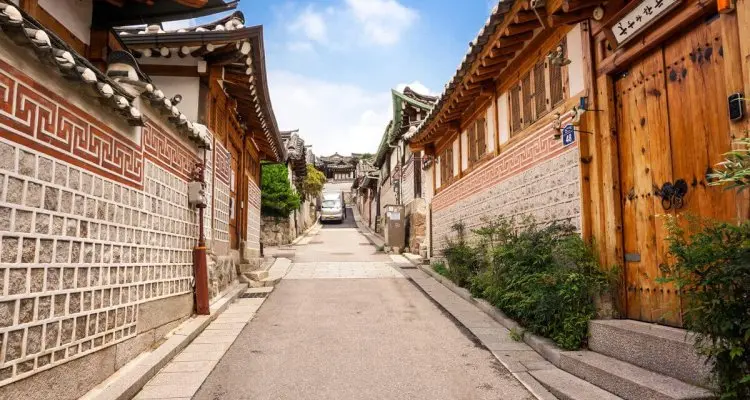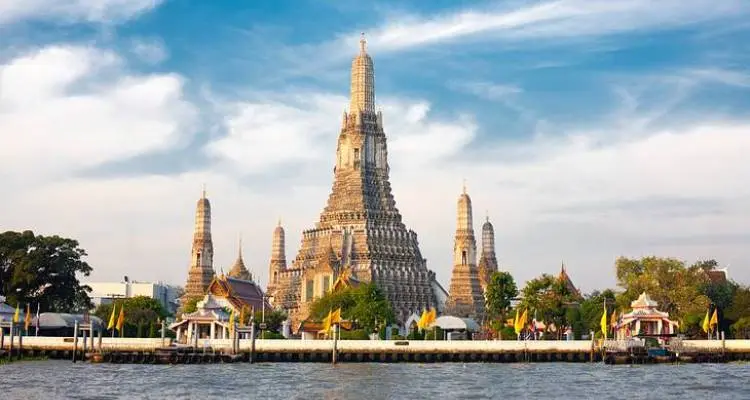Bayon Temple: Exploring the Mysteries of Cambodia’s Enigmatic Smiling Faces
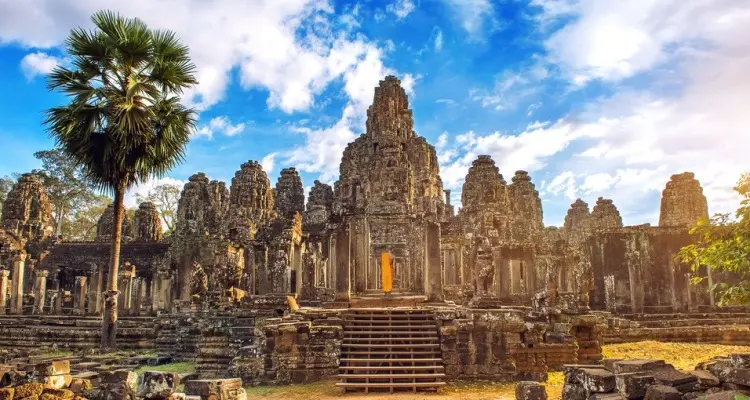
History
Nestled within the ancient city of Angkor Thom, the Bayon Temple is a testament to the architectural genius and spiritual devotion of the Khmer Empire. Built in the late 12th or early 13th century by King Jayavarman VII, this temple stands as a unique and enigmatic masterpiece in the heart of Cambodia.
The Bayon Temple served as the state temple of the Khmer Empire during Jayavarman VII’s reign. It is believed to have been originally dedicated to the Mahayana Buddhist tradition, although elements of Hinduism are also present in its architectural design. The temple’s most distinctive feature is the multitude of serene stone faces that adorn its towers, creating an aura of mystery and fascination.
Over the centuries, the Bayon Temple endured the passage of time, weathering both natural forces and human conflict. In recent years, extensive restoration efforts have been undertaken to preserve this remarkable site, allowing visitors to experience the temple’s grandeur and unravel its secrets.
Why Visit
The Bayon Temple entices travelers from around the world with its captivating blend of history, architectural splendor, and spiritual significance.
The most striking feature of the Bayon Temple is the multitude of massive stone faces that gaze outwards in all directions. These serene, smiling faces are believed to represent either Avalokiteshvara, the bodhisattva of compassion, or Jayavarman VII himself. Exploring the temple feels like entering a realm of mystery and wonder, with each face exuding a sense of peace and wisdom.
The Bayon Temple’s intricate bas-reliefs narrate vivid scenes from Khmer history, mythology, and everyday life. The detailed carvings offer a glimpse into the daily activities, battles, and religious rituals of the Khmer Empire, providing valuable insights into the culture and beliefs of the time.
Beyond its historical and artistic significance, the Bayon Temple offers a profound spiritual experience. The temple’s serene ambiance and the intimate connection between nature and ancient architecture create a tranquil atmosphere conducive to contemplation and reflection.
Location and Route
The Bayon Temple is located within the Angkor Thom complex, approximately 10 kilometers north of Siem Reap in northwestern Cambodia. Siem Reap is the nearest city and serves as the gateway to the Angkor Archaeological Park.
To reach the Bayon Temple, visitors can hire a tuk-tuk, taxi, or bicycle from Siem Reap. Many hotels offer shuttle services to the temple complex, making transportation convenient. Exploring the entire Angkor Thom complex, which includes other significant temples, can take a full day or more.
When to Visit
The best time to visit the Bayon Temple and the Angkor Archaeological Park is during the dry season, which spans from November to March. The weather during this period is relatively cool and pleasant, ideal for exploring the temples and enjoying outdoor activities.
To avoid the crowds, it is recommended to visit the Bayon Temple early in the morning or later in the afternoon. During these times, the temple is generally less crowded, allowing for a more intimate and contemplative experience.
What to See
The Bayon Temple’s most iconic feature is undoubtedly its stone faces. There are 54 towers in total, each adorned with multiple faces. The four-faced towers at the cardinal points are particularly prominent, serving as a symbol of the temple’s spiritual significance.
Beyond the faces, the temple boasts an extensive collection of bas-reliefs. These intricate carvings depict a variety of scenes, including battles, religious rituals, celestial beings, and daily life activities. Exploring the bas-reliefs is like unfolding a visual narrative of the Khmer Empire, offering a deeper understanding of its history and cultural heritage.
The Bayon Temple is also known for its labyrinthine structure, with narrow corridors, courtyards, and hidden chambers. Exploring these hidden corners adds an element of adventure and discovery to the visit, allowing you to uncover hidden details and marvel at the temple’s architectural complexity.
In addition to the Bayon Temple, the Angkor Thom complex includes other significant sites worth exploring. These include the Terrace of the Elephants, the Terrace of the Leper King, and the Baphuon Temple, each with its own historical and architectural marvels.
In summary, a visit to the Bayon Temple is a journey into the heart of Cambodia’s ancient past. Its awe-inspiring stone faces, intricate carvings, and mystical ambiance make it a must-see destination for travelers seeking to immerse themselves in the wonders of the Khmer Empire.
As you wander through the temple’s corridors, marveling at the serene faces and absorbing the rich cultural history, you’ll find yourself transported to a realm of beauty, mystery, and spiritual contemplation.


